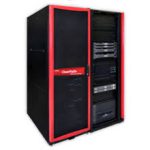These are just a few of the typical business goals our customers present to us.
Often a project fulfills more than one of these business goals.
While our core business remains focused on OS 2200 and related systems, we have also served customers on numerous other technology platforms.
A key factor in our success is the way we work with you.
Process and relationship matter.
We help you identify the technical requirements which fulfill your business goals.
We harmonize with your engineering process so that we are tracking with your quality initiatives.
We augment your capabilities, working cooperatively with your staff. We learn from them, and share our technical experience.

We gain much of our depth from the R & D invested in our proprietary products. We then deploy these skills in our service engagements with our customers.
FCI has depth and breadth in several key areas in the OS 2200 technology profile.
For example, highly technical research in EXEC internals for tape processing and peer-to-peer communications for our product STAR-1100, prepared us for substantial customer engagements with Teradata and StorageTek.
And, experiences in customer engagements also positively influence our product development.
When FCI started, many customers needed assistance implementing their core business applications. Others sought help overseeing operations and administering system upgrades.
Early on, we found ourselves developing local code in the EXEC. This was to make certain features in our products feasible. We also helped customers solve some highly technical integration challenges.

Our reputation for successfully enhancing certain EXEC functions led to several customers seeking us for major projects in integrating their 3rd party solutions. See the detailed stories about StorageTek and Teradata. The scope of these projects included technical work and solution development on A Series.
For several years we found that delivering technical education to OS 2200 sites was highly complementary to our other services work.
In all of our years of experience, we have enjoyed the challenge of integrating other systems with OS 2200. These experiences brought us some opportunities in open systems.
And, with our strong track record in communications, we also implemented solutions integrating client-server platforms with video capture and communications.
When customers were exploring more creative ways of exploiting the Internet, we engaged in some challenging and innovative projects integrating technologies such as wireless monitoring and GPS location services with customers’ web portals. See the detailed stories about Video Monitoring and STOVACT.
For more on how we overcame technical challenges for our customers, see Success Stories.
Requirement
Technology
Where?
How?
Protect the data on a tape volume
Tape processing, tape management
FCI product STAR-1100
We originally developed EXEC local code for STAR-1100 to perform media validation and label checking. This enabled STAR to protect the data on a tape volume. Later this module was adopted by Unisys and officially integrated into OS 2200 as the Media Manager.
Protect all tapes on multiple hosts
Tape management, communiations, peer-to-peer technology
FCI product STAR-1100
STAR’s SLS (Shared Library Subsystem) broke technical ground in communicating among multiple 2200 partitions. It implemented a peer-to-peer capability to continuously synchronize a distributed file, maintaining a common view of the crucial Tape Inventory File on all systems.
Attach robotic library to 2200
EXEC local code, real-time routine, communications, tape processing
Customer Storage Technology
FCI developed local code to intercept tape requests and determine if the user wanted a volume from the attached robotic library. If so, the request was sent to the library controller and the mount request queued back to the EXEC for mounting on a drive in that library.
Attach database machine to 2200
EXEC internals, real-time routine, communications, database, SQL
Customer Teradata
FCI used a low-level interface to attach a database machine to 2200 systems. A real-time “traffic director” program routed user database requests to the database machine and returned results from the massively parallel system.
